The best acrylic paints, selected by artists
Versatile and easy to use, our experts select the best acrylic paints available today.
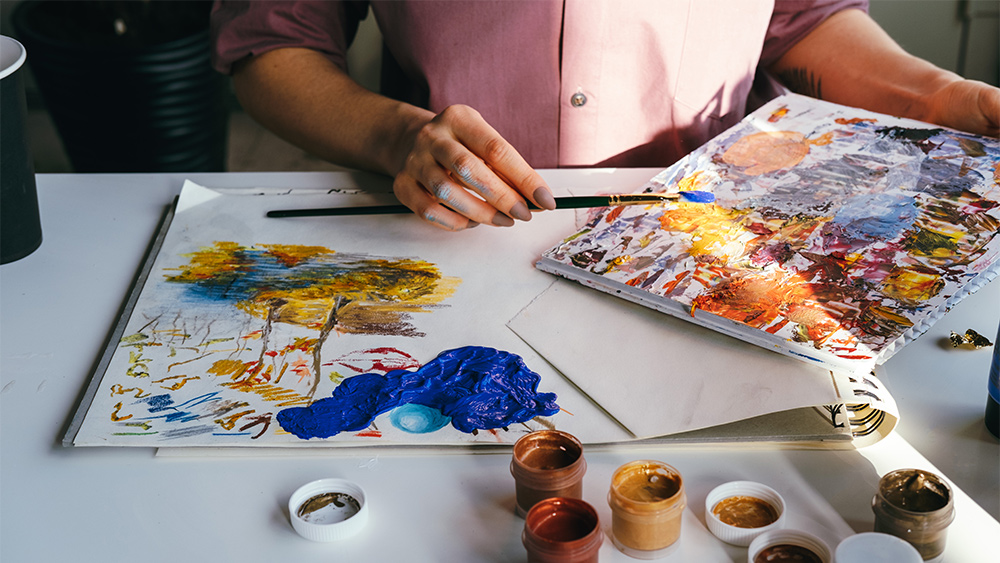
1. The best acrylic paints
2. FAQs
3. How to choose
4. How we test
The best acrylic paints are versatile, fast-drying and fantastic for layering or making quick corrections, and probably the most important purchase in any artist’s studio. Whether you work with canvas, paper, wood, metal or fabric, acrylic paint is a fantastic medium to paint with.
To help you choose, we’ve assembled a selection of fantastic acrylic paints to meet the needs of various types of creatives. We’ve tested and evaluated these paints, considering how pigmented they are, the colour shift, consistency and overall value for money.
Still got some burning questions? We’ve answered some of the most common queries in our FAQs. Or, if you need more studio supplies, check out our guides to the best acrylic paintbrushes, as well as the best easels and the best watercolour pencils. For supplies on sale right now, see our Black Friday art supplies post.
The best acrylic paints available now
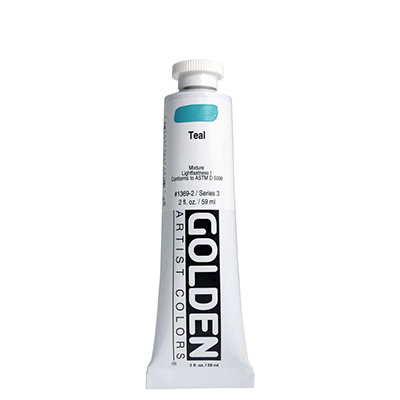
Quality: professional
Size: 60ml – 3.78l
This range has lots of body, strong pigmentation and lots of colours (130+). Especially thick, it holds brushstrokes well, but I find it easy to mix and dilute. I've found no significant shift in colour on drying, though sheens may vary as they have few additives. This can be fixed with your own medium. It's available in large quantities so good for large pieces.
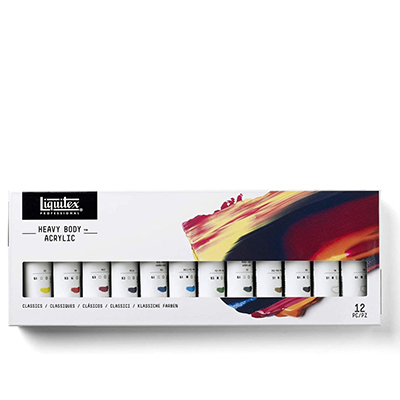
Quality: professional
Size: 59ml – 946ml
Liquitex’s professional acrylics offer bright colours in a fairly thick and versatile paint. Offering a buttery texture that spreads smoothly on different surfaces and covers well, leaving no streakiness. They're relatively expensive, but I've found these to be fast drying – excellent for anyone opting for a more layered painting approach. They don’t retain brushstrokes as easily either.
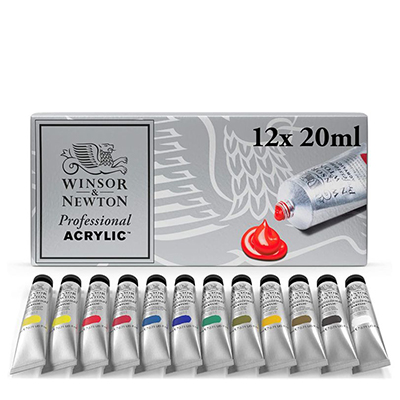
Quality: professional
Size: 20ml – 237ml
Predictable with an even, smooth consistency, these paints readily mix without clumping. I've found very little colour shift, which makes them easy to work with. They're highly pigmented, much brighter than any student range and the colours stay vivid when thinned. Combined with how water-soluble they are, this puts them among the best acrylics for thinner washes.
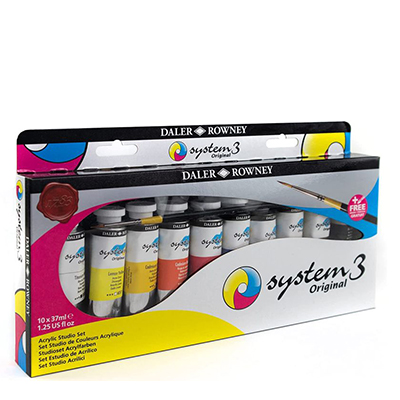
Quality: student
Size: 29.5ml – 2.25l
If you're after the best acrylic paints for students, these have a reasonably thick, smooth consistency which holds brushstrokes surprisingly well, though not always the best opacity. With the exception of the fluorescents, these paints are fairly lightfast and they're available in larger containers, which makes them affordable for big projects.
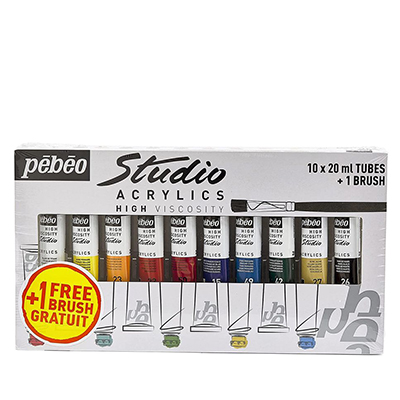
Quality: student / intermediate
Size: 20ml – 250ml
These have richer colour and better opacity than most student ranges with less change when it dries. Although a little runny, and less able to hold brushstrokes, they mix and dilute better than student paints. I'd recommend these as the best acrylic paint for those looking to upgrade who can't afford professional ranges. The biggest weakness is that some aren't lightfast.
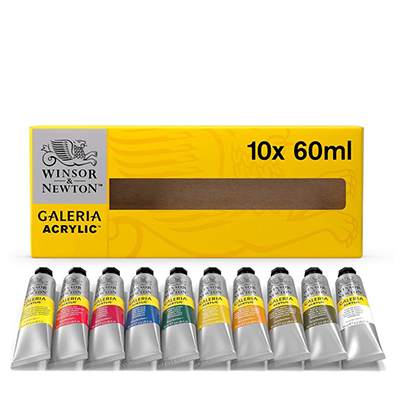
Quality: student
Size: 60ml – 500ml
These are on the thicker side for cheaper paints, with good consistency. They're reasonably good at retaining brushstrokes and have a fairly consistent surface finish when dry. As student paints go, the colours are bright and vibrant, but they tend to need more layers as opacity is rather weak. The paint tends towards clumping when diluted.
FAQs
What are acrylic paints?
Most acrylic paints are water-based, comprising pigment particles in an acrylic polymer emulsion as a binder, which keeps the pigment in place after the paint dries. The best acrylic paints have several benefits: they're fast-drying, they flex, you can clean them with water when wet and they're permanent when dry.
They're particularly versatile because they stick to almost any surface and come in various consistencies and presentations to suit different types of work. For even more flexibility, you can change the character of acrylic paints using different mediums.
The most common forms of acrylic paint are heavy body, soft body (runner), and acrylic ink. In the guide above, we've focused on heavy-body acrylic paints because these thicker paints suit most use cases. You can learn more about the differences between those and acrylics in our comparison of acrylics vs oils, and we also have a guide to the best oil paints.
Why should I use acrylic paints?
Water-based acrylic paints have a number of advantages. As we've noted above, they're quick and easy to set up and learn to use, and they don't require the addition of solvents. They're also very versatile, serving a range of different uses. Acrylics can also be combined with other water-based media – I find it's often useful to use watercolour pencils for initial drawings as they won’t muddy the colours.
Is there a difference between cheap and expensive acrylic paint?
In short, yes. And it can make a big difference. Cheaper acrylic paint contains more filler in the form of acrylic polymer, and less pigment. This means it will be less vibrant and the colour will look flat. You may also need more layers of paint to get the desired look. Though there are some good options for those on a budget (such as Winsor & Newton Galleria Acrylics), spending a bit more will give you a much better finish and consistency.
How to choose the best acrylic paints
To choose the best acrylic paints for you, first decide whether you're looking for professional or student paints. The latter contain less pigment and have a more plastic-looking surface when dry. They're useful for sketching and more affordable for big projects that require lots of paint, and they're also great if you're just trying out the medium and don't want to commit to spending more on better acrylics.
Professional paints contain more pigment and tend to have extra ingredients to improve consistency and surface quality. Better quality paints usually cover a surface more thoroughly, while poorer quality paints may be too see-through, which can be an issue depending on what you're looking for.
Another important quality to look out for is colour shift – that is how much the paint changes colour as it dries. Minimising this removes the need to compensate for changes in colour and the best acrylic paints dry much like the colour you get initially.
Meanwhile, some acrylic paints have a longer working time – how long it takes for the paint to dry – than others, making blending and mixing colours easier, but slowing down layered approaches. Consider what you need your paint for, what kind of look you are going for, and choose what is best for your needs.
How we test the best acrylic paints
Our reviewers, who are all artists themselves, test paints by putting them to working and assessing their various properties in the process. These typically include pigment quality and colour, consistency and texture, drying time and finish, lightfastness (the resistance of the paint to fading over time) and archival quality (the paint's ability to withstand cracking and peeling over time).
Daily design news, reviews, how-tos and more, as picked by the editors.

Lancelot Richardson is an artist, painter, and freelance illustrator based in Brighton, UK. He tutors life drawing at independent art school Draw Brighton, and teaches in their online Patreon courses. He is also a freelance writer, producing articles on art and drawing. He works in both traditional and digital mediums.
